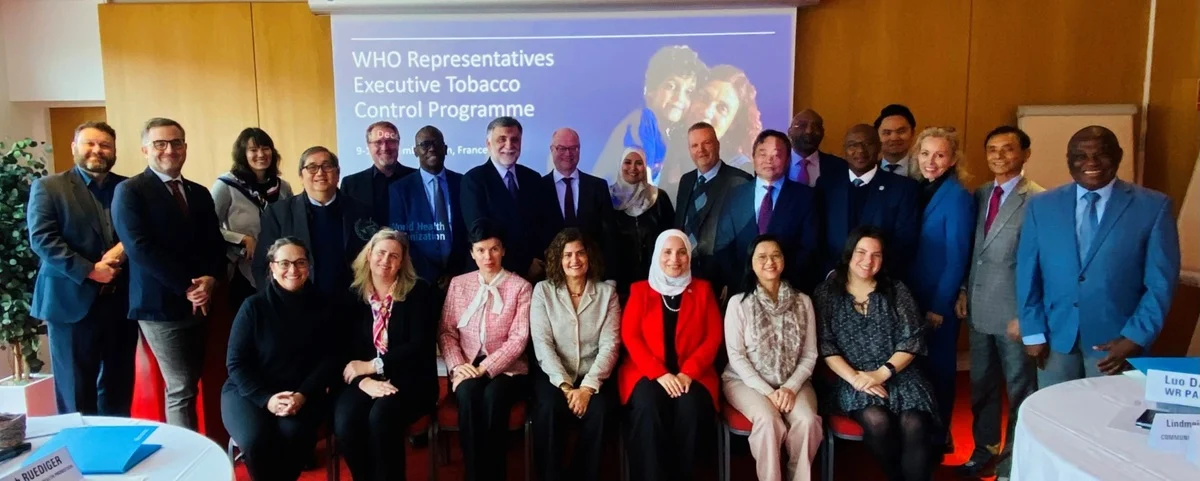
The World Health Organization (WHO) has taken another significant step toward addressing the global tobacco epidemic by hosting its third high-level leadership program focused on strengthening tobacco control efforts worldwide. This initiative underscores the urgency of combating tobacco use, which remains one of the leading preventable causes of death globally, claiming more than 8 million lives annually. The program brought together policymakers, public health leaders, and key stakeholders to discuss strategies, share best practices, and reinforce commitments to reducing tobacco use.
Tobacco use continues to pose a major public health challenge, not only causing millions of deaths but also leading to a significant economic burden on healthcare systems worldwide. The WHO reports that approximately 1.3 billion people use tobacco products, with the majority residing in low- and middle-income countries. These nations bear the brunt of the health and economic consequences of tobacco consumption, as they often lack the resources and infrastructure to implement effective control measures.
In response to this persistent issue, the WHO launched its high-level leadership program as part of the Framework Convention on Tobacco Control (FCTC). The FCTC, adopted in 2003, serves as the first international treaty negotiated under the auspices of the WHO and provides a comprehensive strategy to curb tobacco use and its harmful effects. This third iteration of the leadership program highlights the importance of equipping countries with the tools and expertise needed to implement evidence-based tobacco control policies.
The third high-level leadership program was designed to achieve several critical objectives. First, it aimed to empower global leaders with the knowledge and skills required to advocate for and implement effective tobacco control measures. By fostering a deeper understanding of the social, economic, and health impacts of tobacco, the program sought to strengthen the resolve of policymakers to prioritize tobacco control within their national agendas.
Second, the program focused on encouraging cross-sectoral collaboration. Tobacco control requires a multisectoral approach that involves healthcare, education, trade, finance, and law enforcement sectors. The program facilitated discussions on how these sectors can work together to create an environment that discourages tobacco use and promotes healthier alternatives.
Finally, the program emphasized the importance of innovation and adaptability in addressing emerging challenges. The tobacco industry continues to evolve, introducing new products such as e-cigarettes and heated tobacco devices that target younger demographics. The leadership program highlighted the need for countries to stay ahead of industry tactics by adopting dynamic and forward-thinking policies.
During the program, participants engaged in in-depth discussions on a wide range of topics related to tobacco control. One of the central themes was the implementation of the WHO’s MPOWER measures, a set of six evidence-based interventions aimed at reducing tobacco demand. These measures include:
The program emphasized the importance of comprehensive monitoring systems to track progress and identify areas requiring additional focus. Effective surveillance can provide the data needed to strengthen tobacco control policies and measure their impact over time.
Another critical area of discussion was the role of taxation in reducing tobacco consumption. Participants reviewed evidence demonstrating that higher taxes on tobacco products are among the most effective strategies for curbing tobacco use, particularly among youth and low-income populations. However, implementing such measures requires strong political will and strategies to address potential opposition from the tobacco industry.
The program also highlighted the role of public awareness campaigns in changing societal attitudes toward tobacco use. Graphic warnings on cigarette packages, mass media campaigns, and community-based interventions were identified as powerful tools for educating the public about the risks associated with tobacco consumption.
Despite significant progress in tobacco control, participants acknowledged several challenges that continue to hinder efforts. One major obstacle is the influence of the tobacco industry, which often lobbies against restrictive policies and uses marketing tactics to target vulnerable populations. The industry’s introduction of novel products such as e-cigarettes and heated tobacco devices has also created regulatory gaps in many countries, complicating efforts to protect public health.
Another challenge is the disparity in tobacco control implementation across countries. While some nations have achieved remarkable success in reducing tobacco use, others lack the resources or political support to implement robust measures. The leadership program sought to address this issue by fostering international collaboration and encouraging knowledge-sharing among countries.
Additionally, cultural and social factors can pose barriers to tobacco control. In some regions, tobacco use is deeply ingrained in traditions and lifestyles, making it difficult to change behavior. Tailoring interventions to account for these cultural nuances was identified as a critical component of successful tobacco control strategies.
The third high-level leadership program concluded with renewed commitments from participating countries to intensify their tobacco control efforts. Several nations pledged to strengthen their implementation of the MPOWER measures, increase tobacco taxes, and enhance public awareness campaigns. The program also encouraged countries to integrate tobacco control into broader health and development agendas, recognizing that reducing tobacco use can contribute to achieving the Sustainable Development Goals (SDGs).
One notable outcome of the program was the establishment of a global network of tobacco control leaders who will continue to collaborate and support each other in implementing effective policies. This network is expected to facilitate the exchange of best practices and provide technical assistance to countries facing challenges in their tobacco control efforts.
The WHO’s third high-level leadership program marks a significant milestone in the global fight against tobacco. However, the road ahead remains challenging. To achieve a tobacco-free future, countries must sustain their momentum, address emerging challenges, and remain vigilant against industry interference.
The WHO has reaffirmed its commitment to supporting countries in their tobacco control efforts through capacity-building initiatives, technical assistance, and advocacy. By fostering global collaboration and equipping leaders with the tools they need to succeed, the WHO aims to accelerate progress toward reducing tobacco use and its devastating impact on public health.
In conclusion, the third high-level leadership program serves as a powerful reminder of the collective responsibility to address the tobacco epidemic. Through concerted efforts and unwavering commitment, the vision of a healthier, tobacco-free world can become a reality.















